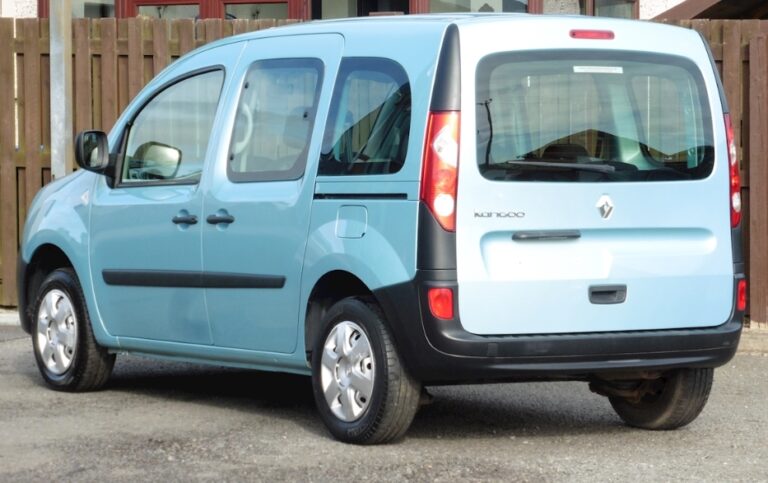The Evolution of the Alfa Romeo GT
Of all the evocative designations in the automotive world, few carry the weight, romance, and performance pedigree of “GT.” Standing for Gran Turismo, or Grand Tourer, the term signifies a car built not for the raw, uncompromising demands of the racetrack, but for covering great distances at high speed, in comfort, and with impeccable style. For Italian automaker Alfa Romeo, a brand whose very soul is intertwined with passion and design, the GT is more than just a model; it is an ideal. This is the story of the modern Alfa Romeo GT, a car that carried a legendary badge into the 21st century, building on a legacy forged decades earlier.
The Spiritual Lineage: Laying the Foundation
To understand the 2003 Alfa Romeo GT, one must first appreciate its ancestors. The GT lineage at Alfa Romeo is most famously rooted in the legendary 105/115 Series Coupés. Penned by a young Giorgetto Giugiaro at Bertone and debuting in 1963 as the Giulia Sprint GT, this car was a masterpiece of proportion and elegance. Its lightweight construction, rev-happy twin-cam engine, and sublime handling dynamics set a benchmark for sporting coupés. Over its long production run until 1977, it evolved through iconic models like the GT Veloce (GTV) and the mighty 2000 GTV, cementing the formula: a stunning two-door body, a spirited engine up front, rear-wheel drive, and space for two occupants and their luggage for a weekend dash across the Alps.
The torch was then passed to the Alfetta GT and its successor, the GTV6, produced from 1974 to 1987. Another Giugiaro design, this car was a product of its time—a sharp, angular wedge that swapped delicate curves for aggressive intent. Technologically sophisticated, it featured a transaxle layout (gearbox at the rear) for near-perfect weight distribution. It truly hit its stride as the GTV6, when engineers famously shoehorned in Giuseppe Busso’s now-legendary V6 engine, creating a car with a sound and character that could stir the soul.
After the GTV6, the GT mantle was briefly carried by the GTV (Type 916) of the 1990s, but that car was more of a pure sports coupé. The market was waiting for a true successor to the classic Gran Turismo concept—a car that blended performance with greater practicality.
.
THIS could come in handy for your auto garage (and everywhere else!):

.
The Rebirth of a Legend: The Alfa Romeo GT (Type 937)
By the early 2000s, Alfa Romeo was experiencing a renaissance. The success of the beautifully styled 156 saloon and 147 hatchback had revitalized the brand. The time was right to reintroduce a dedicated coupé that embodied the classic GT ethos. Unveiled at the 2003 Geneva Motor Show and going on sale late that year, the Alfa Romeo GT (Type 937) was the answer.
Fittingly, Alfa Romeo returned to the very design house that had penned the original Giulia Sprint GT: Bertone. The new GT’s design was a masterful blend of existing Alfa Romeo design language and unique stylistic flourishes. The front end, with its distinctive shield grille (scudetto) and triple-lensed headlights, was clearly derived from the 147 hatchback. However, from the A-pillar back, the car was entirely its own.
The GT’s profile was its most celebrated feature. A long, flowing roofline tapered into a dramatic, high-tailed rear, creating a fastback silhouette. The deep crease running along its flanks, known as the “character line,” gave the car a sense of tension and muscularity. The rear was arguably its most striking angle, with thin, horizontal taillights that emphasized the car’s width and a beautifully integrated tailgate. This hatchback design was a key element of its GT credentials, offering a surprisingly cavernous and practical boot space that made it a genuinely usable long-distance tourer, a clear advantage over many rivals.
Under the skin, the GT was based on the Fiat Group’s Type Two platform, which it shared with the 156 and 147. This meant a front-wheel-drive layout with a sophisticated suspension setup: double wishbones at the front and MacPherson struts at the rear. While purists lamented the switch from the traditional rear-wheel-drive layout of its ancestors, Alfa’s engineers worked diligently to ensure the car retained the sharp, engaging handling for which the brand was renowned.
Production Years: 2003 – 2010
Over its seven-year production run, the Alfa Romeo GT was offered with a thoughtful range of engines and trim levels, designed to appeal to a broad spectrum of buyers, from the style-conscious commuter to the passionate driving enthusiast.
Models and Powertrains
The GT’s engine lineup was a core part of its character, featuring a mix of Alfa’s familiar petrol units and a powerful, torque-rich diesel.
- 1.8 Twin Spark: This served as the entry-level petrol engine in many markets. The 1.8-litre, 16-valve inline-four produced 140 horsepower. While not a powerhouse, the Twin Spark engine was famously eager to rev and provided a classic Alfa Romeo soundtrack, making the base model an enjoyable and stylish proposition.
- 2.0 JTS (Jet Thrust Stoichiometric): This was the mainstay of the petrol range. A 2.0-litre direct-injection four-cylinder engine, it produced 165 horsepower. It offered a significant step up in performance from the 1.8 TS and delivered a responsive, characterful driving experience. The 2.0 JTS was also available with Alfa’s “Selespeed” automated manual transmission, an F1-style system with paddle shifters that offered a sportier alternative to a traditional automatic.
- 3.2 V6 “Busso”: This was the heart and soul of the GT range, the engine that connected the car directly to the legendary GTV6. The magnificent 3.2-litre, 24-valve V6, lovingly nicknamed “Busso” after its creator, was a work of art. With its chromed intake runners forming a visual centrepiece in the engine bay, it was as beautiful to look at as it was to hear. Producing 240 horsepower, it endowed the GT with serious performance (0-60 mph in around 6.5 seconds) and an intoxicating, operatic soundtrack that is still revered by enthusiasts today. The V6 was paired exclusively with a six-speed manual gearbox and represented the ultimate expression of the GT.
- 1.9 JTDm (MultiJet): Acknowledging the realities of the European market, Alfa Romeo offered a superb diesel option. The 1.9-litre, 16-valve turbodiesel produced 150 horsepower (later updated to 170 hp in some versions). What it lacked in high-revving petrol drama, it made up for with a massive wave of torque—305 Nm (225 lb-ft). This made the JTDm an effortless long-distance cruiser, capable of swift overtakes and excellent fuel economy. It became an immensely popular choice, proving that sensibleness and Italian style were not mutually exclusive.
Trim Levels and Special Editions
The GT’s trim structure varied slightly by market and year, but generally followed a clear progression from well-equipped to fully-loaded and performance-focused.
- Progression/Turismo: These often represented the entry-level specifications. Even in base form, the GT was well-appointed, typically featuring air conditioning, electric windows, a CD player, and 16-inch alloy wheels.
- Distinctive/Lusso: This was the more luxurious trim level. It added features like full leather upholstery (a highlight of the cabin), dual-zone climate control, cruise control, a Bose sound system, and larger 17-inch alloy wheels. This specification was particularly popular as it perfectly complemented the car’s Gran Turismo character.
- BlackLine: Introduced later in the car’s life, the BlackLine was a special edition focused on aesthetics. It featured unique 18-inch alloy wheels, satin-effect chrome on the mirrors and grille, and often came in black, red, or carbon black metallic paint. Inside, it featured black leather seats with red stitching.
- Cloverleaf (Quadrifoglio Verde) / Q2: This was the pinnacle of the non-V6 range, aimed squarely at the driving enthusiast. The Cloverleaf name, Alfa’s historic symbol for performance, denoted a sportier package. The key upgrade was the introduction of the Q2 system. This was a Torsen limited-slip differential fitted to the front axle. The Q2 dramatically transformed the handling of the front-wheel-drive GT, particularly the high-torque JTDm model. It significantly reduced understeer, improved traction out of corners, and allowed the driver to apply power earlier and more confidently. Cloverleaf models also featured a sportier suspension setup, unique 18-inch wheels, and visual enhancements. The 170 hp version of the 1.9 JTDm was often paired with this trim.
- Other Special Editions: Throughout its lifecycle, Alfa Romeo released several market-specific special editions to maintain interest. In the UK, for instance, there was the “Collezione” which offered unique paint colors and interior trims, and the final “Centenario” edition, celebrating Alfa’s 100th anniversary in 2010 with bespoke badging and a high level of equipment.
The Legacy of the Alfa Romeo GT
The Alfa Romeo GT ceased production in 2010, marking the end of an era for the traditional Alfa coupé. It was a car that successfully navigated a difficult compromise: it paid homage to its rear-wheel-drive ancestors while being engineered on a modern front-wheel-drive platform.
While some purists never fully embraced its underpinnings, the GT won over legions of fans with its breathtaking Bertone styling, its practical hatchback design, and its engaging driving dynamics. The V6 model stands as a modern classic, a final, glorious home for the legendary Busso engine in a two-door coupé. Meanwhile, the Q2 diesel models are celebrated as hidden gems, offering a superb blend of performance, economy, and dynamic talent.
Today, the Alfa Romeo GT is remembered as one of the most beautiful cars of the early 21st century. It was a true Gran Turismo—a car that made every journey an event, that could cross a continent with ease, and that never failed to turn heads. It was a fitting, soulful conclusion to a specific chapter of Alfa Romeo’s history, and a worthy bearer of the illustrious GT badge.







